| Mar. 19 | |
|
|
|
| DEMOCRATIC PRIMARIES AND CAUCUSES 2008 | Click for Republican primaries and caucuses |
|
News from the Votemaster
The Presidential news is being dominated by Barack Obama's speech on race yesterday. Many commentators are comparing it to Mitt Romney's speech on Mormonism. Romney's problem was that some Americans, especially Southern Baptists, do not agree with Mormons on theological issues (such as whether Jesus will return to earth in Jerusalem or in Jackson County, Missouri). So Romney gave a speech saying he supported freedom of religion, but barely mentioned that he was a Mormon. The net result was that he changed nothing. Obama's speech went to the core of racism in America and basically said blacks have legitimate grievances, but so do many middle class whites who feel the government has never given them a thing and they resent affirmative action programs that give first shot at jobs and college admission slots to people simple because they are black. The next few days will tell how this plays out but here are some initial reactions. A better comparison is to John Kennedy's Sept. 12, 1960 speech to a group of Protestant ministers in Houston in which in clearly said he was not going to take marching orders from the Pope. This speech paved the way for the first Catholic President. Younger voters may not believe it, but at the time, anti-Catholicism was rampant in the country and Kennedy took the bull by the horns in addressing it, much like what Obama did about racism but what Romney failed to do about Mormonism.
Yesterday's posting had a list of House races where the 2006 winner is not running in 2008. Today we have stories about some of the key races to watch east of the Mississippi. Tomorrow west of the Mississippi. All of these are on the Hot House races page listed below the map. These races are expected to be especially competitive. At this point that is a subjective judgment since there is no polling data. Some of the factors are the PVI (Charlie Cook's Partisan Voting Index), whether it is an open seat or there is an incumbent, the quality of the challenger, how much money has been raised, etc. For example, OH-16 (R+4) is going to be very competitive because it is an open seat, but OH-18 (R+6) will be less competitive because although the incumbent is a Democrat in a Republican district, the GOP wasn't able to find a top-tier candidate and is running the former director of the Ohio Dept. of Agriculture. Incumbent Zack Space will have to fight hard, but barring something fairly unexpected (like pulling a Spitzer and pulling a Paterson) he will probably survive. In OH-16, anything can happen.
CT-04 PVI: D+5
| Incumbent | Challenger | Notes |
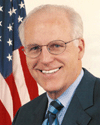
Chris Shays (R) |

Jim Himes (D) |
Chris Shays is the only Republican representative in all of New England and he hung on by the skin of his teeth in 2006. A businessman, Jim Himes, who runs a company that builds low-cost housing is likely to be his opponent. Knocking off the last New England Republican congressman is going to be a prize the Democrats will strive mightily for. In no other region of the country is either party shut out. Even in the South the Democrats maintain a presence, holding the majorities in the Arkansas, Tennessee, and North Carolina congressional delegations (as well as the governorships in all three states). |
FL-13 PVI: R+4
| Incumbent | Challenger | Notes |
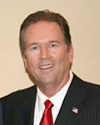
Vern Buchanan (R) |

Christine Jennings (D) |
The winner in 2006 isn't really known yet, let alone 2008. This is Katherine Harris district, where there were 18,000 undervotes. The new Congress will probably have to figure out what to do here, but they are taking their good time about it, so de facto, Buchanan effectively won. Since Jennings is wealthy, retired, and under the impression that she actually won, she has decided to run again in 2008. |
FL-16 PVI: R+2
| Incumbent | Challenger | Notes |

Tim Mahoney (D) |

(R) |
FL-16 is Mark "Pedophile" Foley's district. It leans Republican but Mahoney won it because Foley's name was still on the ballot. It won't be in 2008. On the other hand, Mahoney is a conservative Christian and may be able to hold it under his own steam. Several Republicans are competing in the primary, none of them top drawer. |
IL-10 PVI: D+4
| Incumbent | Challenger | Notes |
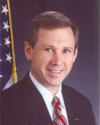
Mark Kirk (R) |
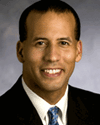
Dan Seals (D) |
Republican Mark Kirk was reelected by 6% although the district has a PVI rating of D+4, so he always to keep an eye over his shoulder to see who's chasing him. Marketing executive Dan Seals, who ran against Kirk in 2006 and got 47% of the vote won the 2008 primary and is the Democratic candidate again. While Seals lost in 2006, this could be a big year for charismatic young black politicians from Chicago. |
IL-11 PVI: R+1
| Challenger | Challenger | Notes |

(R) |
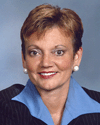
Debbie Halvorson (D) |
This seat opened up due to the retirement of Rep. Jerry Weller (R). The district's PVI is R+1, which ensures a huge battle here. The unopposed Democratic candidate is Debbie Halvorson, President of the Illinois state Senate. The Republicans do not have a candidate yet. |
IN-02 PVI: R+4
| Incumbent | Challenger | Notes |
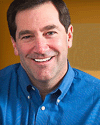
Joe Donnelly (D) |

(R) |
Joe Donnelly defeated Chris Chocola in this somewhat (R+4) Republican district in 2006. He will have to work hard to hold it, but he has a decent chance. He has a fairly conservative voting record in Congress, which will ease his task. Furthermore, although four Republicans have signed up for their primary, none of them has held elective office before. |
MI-07 PVI: R+2
| Incumbent | Challenger | Notes |

Tim Walberg (R) |

Mark Schauer (D) |
Tim Walberg is a vulnerable Republican freshman who beat an unknown Democratic opponent in 2006 50% to 46% despite having outspent her 25 to 1. He is high on the list of targets prepared by DCCC chairman Chris van Hollen (D-MD), who has $30 million in the bank to spend in 2008. Walberg's likely opponent is Mark Schauer, minority leader of the Michigan state Senate. Definitely a key race to watch. |
NJ-03 PVI: D+3
| Challenger | Challenger | Notes |

(R) |

John Adler (D) |
The unexpected retirement of Jim Saxton (R) in this slightly Democratic district (PVI of D+3) will set off a huge battle as the Democrats smell blood here. This contest will probably be the biggest single political event in the state in 2008, since the Democrats will probably win the presidential and Senate races easily. The Democratic candidate will be state senator John Adler. The Republicans do not have a candidate yet. |
NJ-07 PVI: R+1
| Challenger | Challenger | Notes |

(R) |

Linda Stender (D) |
The unexpected retirement of Mike Ferguson (R) in this slightly Republican district (PVI of R+1) will set off a huge battle as the Democrats will go after this seat with hammer and tongs. The only NJ race that will overshadow it is the congressional race in NJ-03. The Republicans have a competive primary. Kate Whitman, the daughter of former governor Christine Whitman, is one of the candidates. |
NY-19 PVI: R+1
| Incumbent | Challenger | Notes |
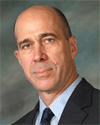
John Hall (D) |

Kieran Lalor (R) |
Challenger John Hall (D) wasn't expected to win in this Hudson Valley district, but a hugely successful grass roots effort put him over the top by about 2%. The district is R+1, so as an incumbent, he has a good chance of being reelected in 2008. So far the only Republican in the race is Kieran Lalor, an Iraq veteran. |
NY-20 PVI: R+3
| Incumbent | Challenger | Notes |

Kirsten Gillibrand (D) |
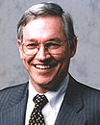
Sandy Treadwell (R) |
Kirsten Gillibrand pulled of a surprise win in this slightly Republican part of the upper Hudson Valley. Her win was partly due to her opponent, John Sweeney, beating his wife and having her call 911. She won't be able to count on such good luck this time. But this time she will be the incumbent and the power of incumbency may be enough to offset the slight partisan edge (R+3) the Republicans have. She is raising money like there is no tomorrow and already has well over $2 million cash on hand. Her opponent is likely to be Sandy Treadwell (R), former chairman of the New York State Republican Party, although Treadwell must first dispatch a couple of minor opponents in the primary, which may use of some of the $750,000 cash he has on hand. |
NY-25 PVI: D+3
| Incumbent | Challenger | Notes |

(R) |

Dan Maffei (D) |
Incumbent Jim Walsh (R) beat back a challenge from novice Dan Maffei (D) by beating him by just under 4000 votes in this slightly (D+3) Democratic district around Syracuse. Maffei has announced he is running again in 2008, but Walsh dropped out of the race in January 2008. Now far more experienced, Maffei has a good chance in this district that Kerry carried in 2004, albeit by a 2% margin. The only announced Republican candidate is Peter Cappuccilli, former director of the state fair, but it is possible that someone with a bit stronger credentials will still enter. |
NY-26 PVI: R+3
| Incumbent | Challenger | Notes |
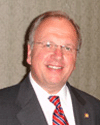
Tom Reynolds (R) |
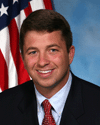
Jon Powers (D) |
Tom Reynolds has represented a conservative district in Western New York hard by the Canadian border for four terms. In 2006 he was chairman of the NRCC and saw the Democrats take over the House. He was also involved in the Foley-page scandal, having known about Rep. Foley's overly friendly behavior towards underage pages and not done much. He is being opposed by an Iraq war veteran, Jon Powers. |
NY-29 PVI: R+5
| Incumbent | Challenger | Notes |
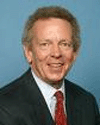
Randy Kuhl (R) |
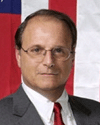
Eric Massa (D) |
This race is a rerun of the 2006 one, which Kuhl won by 6000 votes out of 206,000 votes cast. It pits sophomore congressman Randy Kuhl against 24-year Navy veteran Eric Massa. The district has a definite Republican tilt to it, but Massa's surprisingly good showing in his first run for public office, his long military service, and DCCC chairman Chris Van Hollen's bulging bank account will make this district a battleground. |
NC-08 PVI: R+3
| Incumbent | Challenger | Notes |
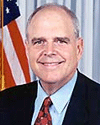
Robin Hayes (R) |

Larry Kissell (D) |
Incumbent Robin Hayes won this race by 329 votes against a totally unknown high school teacher, Larry Kissell. This time, with some help from the DCCC, Kissell might be able to finish the job. |
NC-11 PVI: R+7
| Incumbent | Challenger | Notes |

Heath Shuler (D) |

(R) |
This district is heavily Republican (R+7), but Heath Shuler is a famous football star, which is why he won in the first place. Add to this the power of incumbency, and it will be tough to dislodge anybody his size. No heavyweight Republicans have announced so far. |
OH-01 PVI: R+1
| Incumbent | Challenger | Notes |
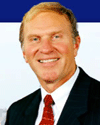
Steve Chabot (R) |
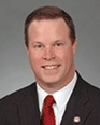
Steve Driehaus (D) |
Congressman Steve Chabot was elected to a seventh term in 2006 53% to 47% against a relatively unknown challenger. This time he is likely to face the minority whip of the Ohio state House, Steve Driehaus. With the DCCC flush with funds and Chabot facing an experienced politician, this race in an evenly split district will draw a lot of attention. |
OH-02 PVI: R+13
| Incumbent | Challenger | Notes |
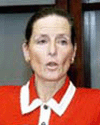
Jean Schmidt (R) |

Victoria Wulsin (D) |
Although this is one of the most Republican districts in Ohio (R+13), freshman Jean Schmidt defeated physician Victoria Wulsin by fewer than 3000 votes out of 225,000 votes cast. Despite the Republican tilt of the district, with Schmidt doing so badly, the Democrats are likely to go after her again in 2008. Both Schmidt and Wulsin won their primaries, so they will face off again. |
OH-15 PVI: R+1
| Challenger | Challenger | Notes |

Steve Stivers (R) |
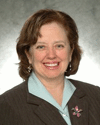
Mary-Jo Kilroy (D) |
This seat is held by Deborah Pryce, a 9-term congresswoman who is #4 in the House leadership. In August 2007, she announced that is returning to Ohio to spend more time with her family. In her announcement, she did not mention anything about the fact that an unknown local county commissioner, Mary Jo Kilroy came within 3500 votes of unseating her in 2006 (out of over 200,000 votes cast). Kilroy is running again. Her likely opponent is state senator Steve Stivers. |
OH-16 PVI: R+4
| Challenger | Challenger | Notes |
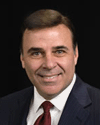
Kirk Schuring (R) |

John Boccieri (D) |
This seat is held by Ralph Regula, who is retiring. The Democratic nominee is state senator John Boccieri. The Republican nominee is also a state senator, Kirk Schuring. This is a top-tier race and will be closely watched. |
PA-06 PVI: D+2
| Incumbent | Challenger | Notes |
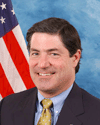
Jim Gerlach (R) |

Bob Roggio (D) |
The incumbent, Jim Gerlach, won an extremely close contest with Lois Murphy, beating her by only 3001 votes, but she is not running this time. Instead, the Democratic candidate will be retired businessman Bob Roggio. |
PA-10 PVI: R+8
| Incumbent | Challenger | Notes |
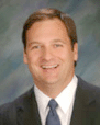
Chris Carney (D) |

(R) |
PA-10 is the district whose congressman, Don Sherwood, had a long-running affair with a young Peruvian immigrant 35 years his junior. Then he choked her and she called 911. End of Sherwood. But given the Republican tilt of the district (R+8), the Republicans will try hard to get it back. Since the Republican nomination in this district is very valuable, there will undoubtedly be a fight for it. Dan Meuser, a wealthy local businessman who could finance his own campaign without help from the cash-strapped NRCC, is mulling a run. |
VA-11 PVI: R+1
| Challenger | Challenger | Notes |

(D) |

Keith Fimian (R) |
In a surprise move, Rep. Tom Davis (R) announced he is not running for reelection. Northern Virginia is trending Democratic in recent years and this district is just about evenly split between the parties. It is going to become a huge battleground as the Democrats smell a pickup here. State senator Leslie Byrne and Fairfax County Supervisor Gerry Connolly are competing in the Democratic primary. Byrne ran for Lt. Governor in 2005 and lost, but she swept VA-11. The unchallenged Republican candidate is a rich local businessman, Keith Fimian. |
We have one new poll today.
| State | Pollster | End date | Clinton | Obama | McCain | Huckabee | Paul |
| Pennsylvania | Quinnipiac U. | Mar. 16 | 53% | 41% |
The polling results for all states are available as a Web page and in .csv format.
Here are the delegate totals from various news sources rounded to integers (Democrats Abroad has 22 delegates, each with 1/2 vote). The sources differ because in most caucus states, no delegates to the national conventions have been chosen yet, just delegates to the district, county, or state convention so there is some guesswork involved. Furthermore, some of the unpledged delegates are elected at state conventions in May or June. Finally, the PLEOs (Party Leaders and Elected Officials) sometimes waver and may tell different reporters slightly different stories that they interpret differently.
Delegates
| Source | Clinton | Obama | BHO-HRC | Edwards | McCain | Romney | Huckabee | Paul |
| Washington Post | 1498 | 1617 | +119 | 1334 | 278 | |||
| NY Times | 1472 | 1620 | +148 | 12 | 1152 | 142 | 225 | 5 |
| AP | 1498 | 1617 | +119 | 26 | 1334 | 257 | 278 | 14 |
| CNN | 1479 | 1621 | +142 | 26 | 1325 | 255 | 267 | 16 |
| ABC | 1485 | 1614 | +129 | 32 | 1267 | 273 | 272 | 14 |
| CBS | 1477 | 1611 | +134 | 26 | 1241 | 149 | 231 | 10 |
| MSNBC | 1504 | 1625 | +121 | 26 | 1266 | 293 | 262 | 14 |
Needed to win: Democrats 2025, Republicans 1191.
Here is another source for delegate totals.
-- The Votemaster